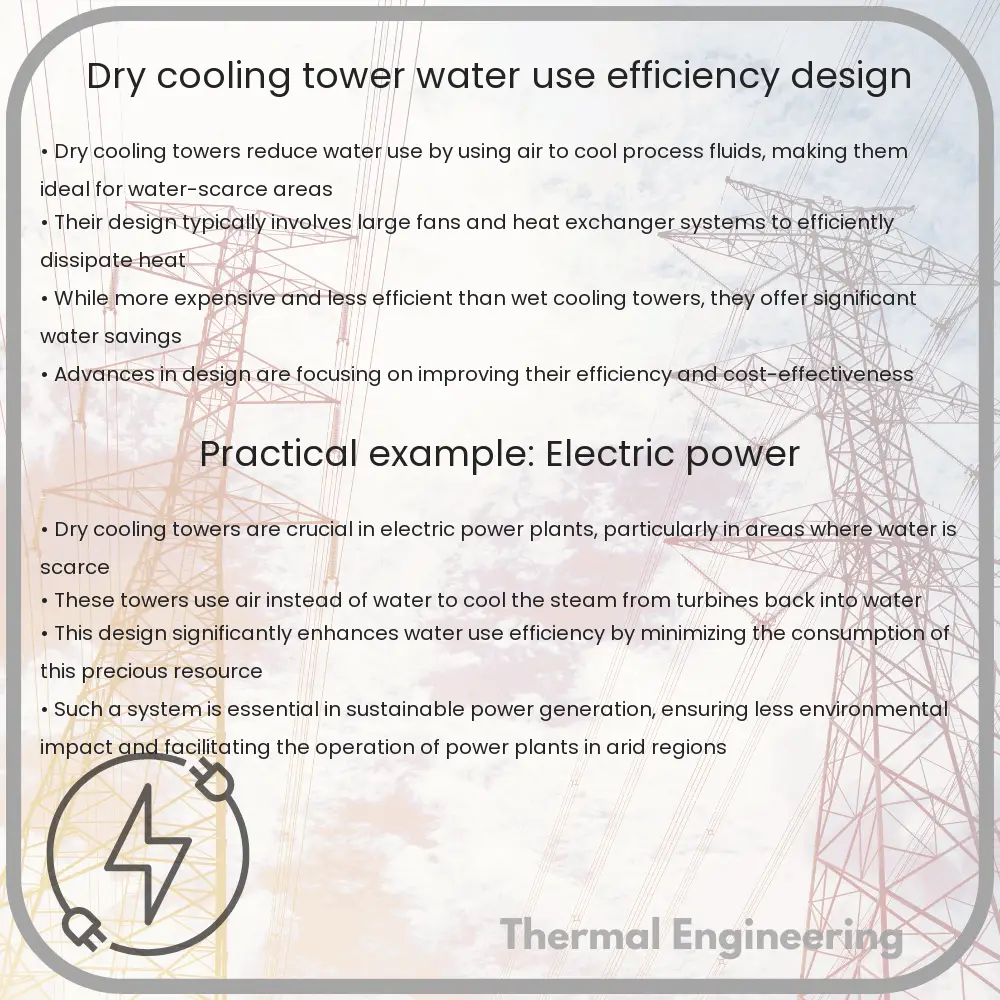Dry cooling towers are advanced industrial cooling systems that use air instead of water to remove heat, enhancing water conservation and reducing chemical use.

Dry Cooling Towers: Maximizing Water Use Efficiency through Innovative Design
In an era where water scarcity is an increasingly critical global issue, engineering solutions that reduce water usage are in high demand. One such solution in the field of industrial cooling is the dry cooling tower. Unlike traditional wet cooling towers that rely on the evaporation of water to remove process heat, dry cooling towers utilize air as the cooling medium, thereby significantly reducing water consumption.
Understanding Dry Cooling Towers
Dry cooling towers, also known as air-cooled heat exchangers, function by passing the heated process fluid through a finned coil while air is blown over it to dissipate the heat to the atmosphere. The key components of a dry cooling tower include the air inlet, fan, motor, plenum, and finned heat exchange coils. This technology varies primarily in two types: Air-Cooled Condensers (ACC) and Air Fin Coolers (AFC).
Design Principles of Dry Cooling Towers
The design of a dry cooling tower focuses on maximizing heat transfer efficiency while minimizing resource use and operational costs. Here are the primary design considerations:
- Air Flow Design: Achieving optimal airflow across the heat exchange coils is crucial. This can be significantly influenced by fan size and type, the geometric arrangement of the coils, and the tower’s overall aerodynamics.
- Fin Efficiency: The fins in the heat exchange coils enhance the surface area, improving the heat transfer from the fluid to the air. Material selection and fin design play a vital role in the efficiency of these components.
- Material Selection: The materials used must withstand diverse environmental conditions and potential corrosion over extended periods. Common materials include aluminum, stainless steel, and copper.
- Plant Integration: The dry cooling system must be integrated effectively with the overall process plant to ensure operational efficiency and comply with space and operational constraints.
Benefits of Dry Cooling Towers
Dry cooling towers offer several advantages over their wet counterparts:
- Water Conservation: They eliminate the need for large volumes of water, which is beneficial in areas with water scarcity.
- Reduced Chemical Usage: Since there is no water evaporation, the use of chemicals for treating water is substantially reduced, which also lessens environmental impact.
- Operational Cost: Although the initial investment may be higher, the reduction in water and chemical costs can offset this over time.
- Environmental Impact: These towers do not produce plumes or drift, typical in wet cooling systems, which are often associated with environmental and health concerns.
Conclusion
Dry cooling towers represent a significant step forward in industrial cooling technology, offering sustainable benefits particularly important in water-scarce regions. By understanding and implementing the principles of effective dry cooling tower design, industries can achieve efficient thermal management that aligns with global sustainability goals. As technology advances, we can expect to see further improvements in these systems that will enhance their efficiency and decrease operational costs, making them a more appealing option for a wide variety of applications.